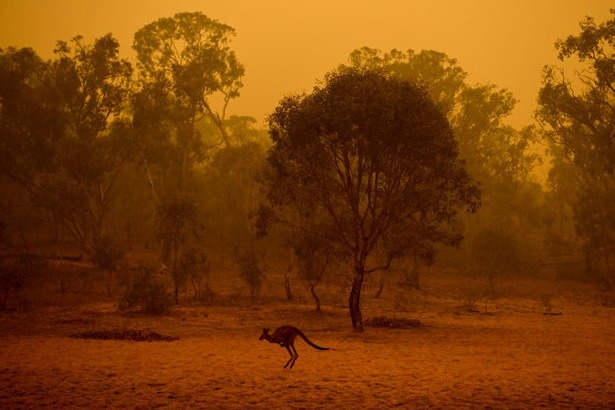Planning for Security: Establishing an Efficient Bushfire Management Plan
Planning for Security: Establishing an Efficient Bushfire Management Plan
Blog Article
Essential Tips for Bushfire Management to Make Sure Fire Protection

Comprehending Bushfire Threat Levels
Understanding the differing degrees of bushfire danger is essential for reliable preparation and preparation in mitigating possible risks to buildings and lives. Bushfire threat levels are generally classified based on elements such as climate condition, gas schedule, topography, and historical fire actions. By comprehending these threat degrees, communities and people can proactively execute strategies to reduce vulnerability and improve resilience despite possible bushfire occasions.
The first level of bushfire danger is reduced danger, where the possibility of a bushfire taking place and creating considerable injury is minimal. High-risk levels symbolize a substantial risk, with conditions favorable to fast fire spread and extreme fire actions.
Understanding these bushfire threat levels makes it possible for stakeholders to tailor their preparedness and action activities as necessary, guaranteeing a proactive and reliable strategy to bushfire monitoring.
Creating a Defensible Area
Efficient bushfire monitoring starts with establishing a defensible space around buildings to enhance protection versus prospective fire hazards. A defensible room is a buffer zone that creates an obstacle in between a framework and the surrounding flammable vegetation. This room acts as a critical line of protection, offering firemens a secure area to operate and aiding to reduce the threat of a fire spreading out to the residential property.
When creating a defensible room, it is necessary to take into consideration the layout of the residential or commercial property and the surrounding landscape. Clearing plants, specifically very flammable plants, within a particular radius of the residential property can help prevent the fast spread of fires. Furthermore, maintaining a well-irrigated zone around the home can better improve its defensibility.
Normal upkeep of the defensible room is essential to ensure its effectiveness. This includes cutting looming branches, getting rid of dead plant life, and maintaining the area without debris. By investing effort and time into establishing and keeping a defensible space, homeowner can substantially enhance their possibilities of protecting their homes and properties throughout a bushfire.
Applying Fire-Resistant Landscape Design
When making landscapes to mitigate the threat of bushfires, incorporating fire-resistant elements is important for enhancing residential or commercial property protection and reducing fire risks. Select plants with high moisture content, low oil material, and marginal dead vegetation to reduce the danger of fire spread.

Developing an Emergency Emptying Plan
Creating a comprehensive emergency situation discharge plan is important for making sure the security and wellness of individuals during prospective bushfire occurrences (Bushfire Management Plan). An efficient discharge strategy ought to lay out clear procedures to follow in case of a bushfire danger, including assigned evacuation courses, assembly factors, and communication protocols
To start developing an emergency evacuation plan, it is necessary to examine the particular threats and susceptabilities of your place. Recognize numerous evacuation courses that cause secure locations far from the fire, considering variables such as terrain, roadway access, and prospective threats. Establish communication networks to sharp residents of an approaching emptying, using approaches such as sirens, message alerts, or door-to-door alerts.
Routinely evaluation and exercise the emptying plan with all residents or area members to make certain everyone recognizes their roles and responsibilities. Conduct drills to examine the effectiveness of the plan and make any kind of essential adjustments. By having a well-prepared evacuation strategy in position, you can improve the chances of a secure and orderly evacuation during a bushfire emergency situation.
Preserving Fire Security Tools
After developing a comprehensive emergency emptying prepare for bushfire occurrences, it is crucial to focus on the regular upkeep of fire safety and security devices to make certain ideal capability and preparedness. Normal upkeep of fire security devices such as fire extinguishers, smoke alarm, fire alarm systems, and automatic sprinkler is vital in protecting lives and property throughout a bushfire. Conducting routine examinations, screening, and maintenance of these tools by qualified specialists is vital to assure they are in working order when needed.
Fire extinguishers should be inspected routinely for stress degrees, noticeable damages, and appropriate capability. Smoke alarm need to have their batteries replaced at least yearly and undergo month-to-month testing to guarantee they are operational. read more Fire alarms and lawn sprinkler need to be checked occasionally to validate they are linked and functioning appropriately. Furthermore, it is essential to maintain fire security tools easily accessible, unhampered, and clearly identified for easy identification during an emergency situation. By carefully maintaining fire security equipment, individuals can boost their preparedness and action capacities in case of a bushfire.
Final Thought
In conclusion, effective bushfire monitoring involves understanding danger degrees, producing defensible areas, executing fire-resistant landscaping, creating emptying strategies, and keeping fire safety equipment. By complying with these essential pointers, individuals can guarantee much better fire defense and safety for their communities and properties. It is necessary to focus on proactive steps to minimize the dangers connected with bushfires and to be prepared for emergencies.
By understanding the nuances of bushfire danger degrees, creating defensible spaces, executing fire-resistant landscaping, producing comprehensive emptying plans, and guaranteeing the maintenance of fire safety devices, neighborhoods and people can substantially reinforce view publisher site their strength against the devastations of wildfires - Bushfire Risk. These suggestions are not just crucial for safeguarding versus prompt fire risks yet also for fostering lasting fire protection approaches that can make a substantial difference in the face of rising bushfire threats
High-risk levels symbolize a significant hazard, with conditions conducive to rapid fire spread and extreme fire actions. Regular maintenance of fire security devices such as fire extinguishers, smoke detectors, fire alarm systems, and lawn sprinkler systems is vital in safeguarding lives and building throughout a bushfire.In conclusion, efficient bushfire management involves comprehending danger levels, producing defensible rooms, implementing fire-resistant landscaping, the original source developing emptying strategies, and keeping fire safety and security tools.
Report this page